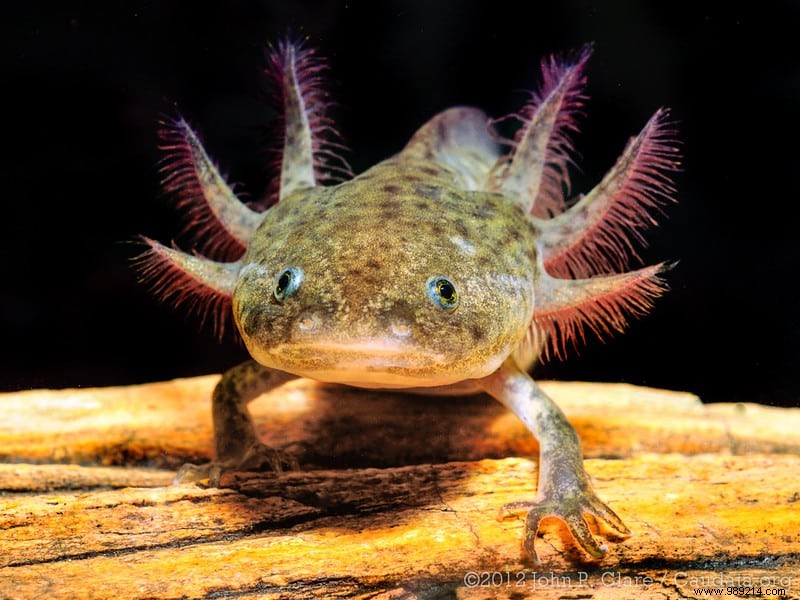The axolotl is a species of aquatic salamander living in Mexico and having rather surprising powers. This animal is the subject of much genetic research, the objective of which is to restore damaged tissues in humans and thus perhaps one day allow eternal life.
Endemic to the high altitude lakes Xochimilco and Chalco in central Mexico, the axolotl (Ambystoma mexicanum) is a very special species of salamander. This amphibian has a flattened head, a fish-like body, four legs and a mane of gills. Little known, it measures between 15 and 30 cm and weighs about 100 grams. In addition, this animal is carnivorous, feeding mainly on worms, insects and small fish. If spared from predators, its lifespan is about 10 to 15 years , but can however reach 25 years.
The axolotl is neotenic, that is to say able to evolve in the larval state while reproducing, and this, throughout its life. And above all, he can regenerate any part of his body in case of injury or removal, whether it is the legs, the nerves of the spinal cord, the eyes and even the brain. Here we are talking about regeneration by epimorphosis. This involves the multiplication of millions of cells on the surface of the injury then ending up resorbing or of the limb to be regenerated.

Appreciated by the general public, the axolotl is sometimes even adopted as a pet. However, the animal arouses the interest of research above all for its non-standard capacities. What if it was possible to find a way to regenerate damaged tissue in humans? The question remains open insofar as the axolotl has a very complex genome. Indeed, its DNA contains 32 billion pairs of nucleotides , ten times more than humans.
In a study published in 2021 in the journal PNAS, researchers were certainly able to map and sequence the genome of the amphibian, a real feat. On the other hand, the genes of interest in terms of regeneration have not yet been identified. Thus, more work is needed in order to obtain essential answers in order to maintain the hope of eternal life in humans .
Only, the axolotl is an endangered species and even classified as critically endangered by the International Union for Conservation of Nature (IUCN). Its gradual disappearance in Mexican lakes indeed worries many animal protection and environmental associations.